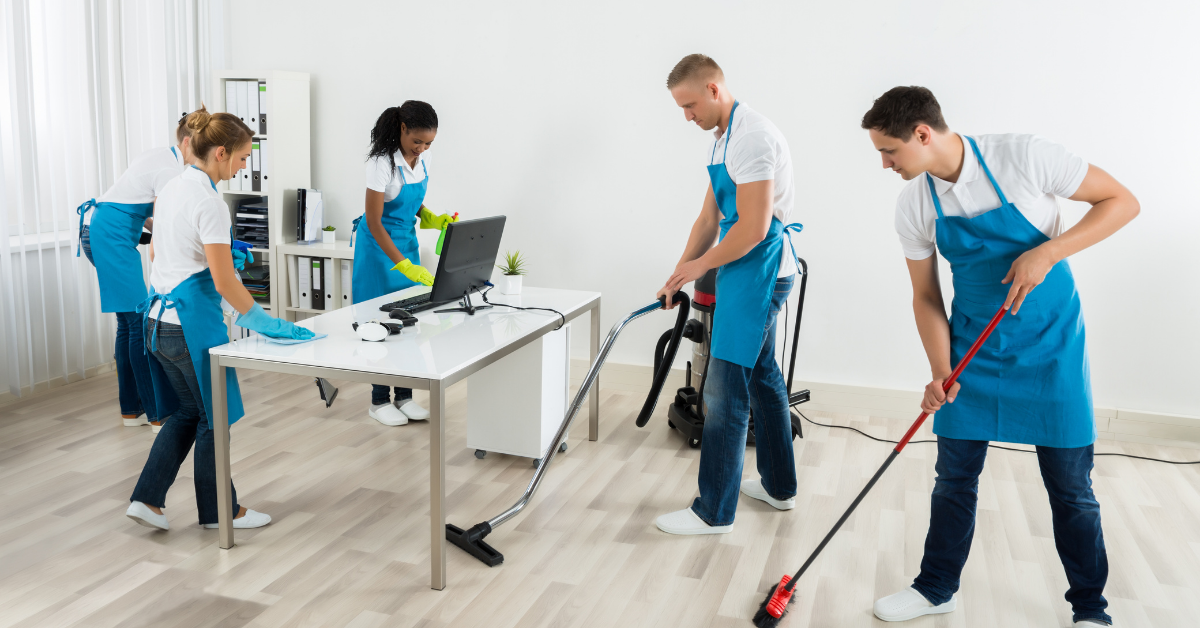
06 Nov Planning for a COVID-Safe Workplace
As businesses slowly re-open around Melbourne in line with the easing of restrictions, workplaces shift to adopt a new level of hygiene compliance.
Close adherence to well thought-out COVID-Safe Plans will not only reduce the chance of government fines, but also control the health risks to staff and customers. All businesses in Victoria now need a COVID-Safe plan, and these plans must cover six broad principles:
-
- Ensure physical distancing
- Wear a face covering
-
Practise good hygiene
- Keep records and respond quickly if workers become unwell
- Avoid interactions in enclosed spaces
- Create workforce bubbles
What it means to practise good hygiene in a workplace
This requirement goes beyond regular hand washing and the availability of hand sanitiser — although these are part of it.
The new expectation is that shared spaces are frequently and regularly cleaned and disinfected, this includes high-touch communal items such as doorknobs, telephones and lift buttons.
Wherever possible, it is recommended to replace high-touch communal items with single-use or contactless alternatives. Of course, this isn’t always practical which is where thorough cleaning becomes essential.
The need to now document a clear cleaning plan for businesses can be overwhelming for businesses used to concentrating on the primary task at hand.
A&S have been making cleaning schedules for years to ensure our clients’ premises are always spotless. Our trained staff know exactly how to clean each surface, and what cleaning products to use.
Along with the regular professional cleans, many of our clients are now adding in additional measures between contracted services to ensure compliance. We’re more than happy to assist our clients in this planning.
A register and checklist of how, what and when to clean each item makes it easy for everyone to keep track of cleaning, even if this was not previously their responsibility.
Things to consider for a cleaning schedule
If you’ve got professional cleaners servicing your workplace, you’re halfway there. Ask them what items they’ve deemed high-frequency touchpoints and what they’re cleaning schedule is. From that, you should be able to work out when additional cleans are needed.
If you’re going at it alone, these tips will get you started:
- Do an audit of each room in your workplace, starting outside the entrance. Note down each item that would likely be touched by multiple people throughout the day (high-frequency touchpoints).
- Create a register for each room listing the items that need to be cleaned, leaving space to note each time it is cleaned and by which staff member.
- For each item, list the minimum frequency it needs to be cleaned. This varies depending on what it is and how often it is touched. Twice a day would be a minimum, but some items need more frequent cleaning. Remember, things don’t need to look dirty to be unclean.
- Include on the register brief notes on how each item is to be cleaned and what products should be used.
- Include a plan to regularly change cleaning cloths, and make sure cross-contamination betweens items and rooms doesn’t happen. (Don’t use the bathroom cloths in the kitchen!)
- Finally, ensure your staff and anyone responsible for cleaning is aware of the process, and be sure to check the registers are being used and the cleaning schedule maintained.
Not all products kill all harmful germs, so make sure you’re using something with 62-71% ethanol, 0.5% hydrogen peroxide or 0.1% sodium hypochlorite. You also need to ensure the products are in contact with surfaces for the required time before wiping away.
We knew a lot of businesses were confused about what products to use, so we made our commercial quality A&S Spray Fresh Disinfectant available for purchase. You can read more about how the chemicals in this product work here.
If you’re confused about cleaning, or just want to outsource the process, get in touch with our team and we can create a customised plan for you.

